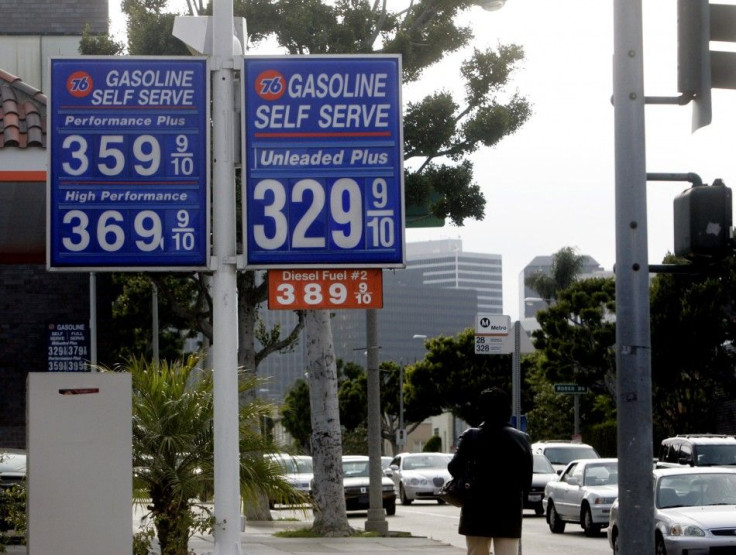U.S. Gas Prices Continue to Drop as End-of-Year Holiday Travel Period Approaches
Analysis

It's been a year when the U.S. economic recovery struggled to regain its momentum, but Americans can take heart with one trend of late that's been running in their favor, just in time for end-of-the-year holiday travel -- gas prices, which fell another 5 cents last week to an average of $3.23 per gallon for regular unleaded, according to the Lundberg Survey.
Trilby Lundberg, president of the Lundberg Survey based in California, said two factors are putting downward pressure on gas prices.
Unknowns about the European debt crisis seem to have made oil prices skittish, and it is the cause of continued declines at the pump, Lundberg said, Bloomberg News reported. The U.S. gasoline market continues to receive down pressure from falling gasoline demand.
The average price of mid-grade unleaded was $3.40 per gallon; the average price for super unleaded was $3.52. per gallon, The Associated Press reported.
Cheapest Gas: Albuquerque, N.M.
In the contiguous 48 states, the cheapest average gas price could be found in Albuquerque, N.M., at $2.83 per gallon; the highest average gas price was in San Francisco, Calif. at $3.57 per gallon, CNN.com reported.
Averages from other U.S. cities were as follows: Seattle, $3.46; Boston, $3.34; Miami, $3.22; St. Louis, $3.14; and Denver, $3.08.
The fact that weaker demand conditions have put a downward pressure on gas prices as 2011 comes to a close represents the good news for U.S. motorists. The bad news is that the average price is still 33 cents -- or about 10 percent -- higher than a year ago.
Also, U.S. gasoline demand for the week ended Dec. 9 was 8.76 million barrels per day (bpd), down 4.6 percent for a year ago in Dec 2010.
Further, the decline in the price of gasoline, if it holds, represent perhaps the best news for the U.S. economy this year, outside of the end of the period of large job lay-offs by U.S. corporations.
The reason? Each $1 per barrel drop in oil increases U.S. GDP by $100 billion per year and every 1 cent decline in gasoline increases U.S. consumer disposable income by about $600 million per year.
Hence, the decline in gas prices represents a de facto tax cut for the American people -- one most probably welcome, given stagnant incomes in many job classifications, and amid pinched budgets; living costs have also rising in other areas (property taxes, insurance, utilities, user fees).
Energy/Economic Analysis: Although the United States is consuming less gasoline and oil on a per capita basis than a decade ago, gasoline prices remain an important variable concerning U.S. GDP growth.
Simply, high gasoline and diesel prices reduce consumer disposable income and increase business costs -- creating a drag effect on the U.S. economy. Essentially, dollars that could be used by consumers and businesses for other purposes -- buying a new washer or dryer or investing in office equipment, for example --- are siphoned off to pay for transportation expenses -- and that constrains commercial activity.
Hence, the downward trend in gas prices is welcome. Don't misunderstand, gas prices are still too high -- the average price needs to drop and remain below $2.75 per gallon to significantly boost disposable income and help get Americans in a better mood -- but the roughly 75-cent per gallon plunge in regular unleaded's price (it was about $3.98 per gallon in May) will free-up some dollars, and provide a smaller amount of stimulus to the U.S. economy. And given the headwinds facing the U.S. economy, investors and certainly U.S. motorists will take any good news they can get.
© Copyright IBTimes 2025. All rights reserved.





















